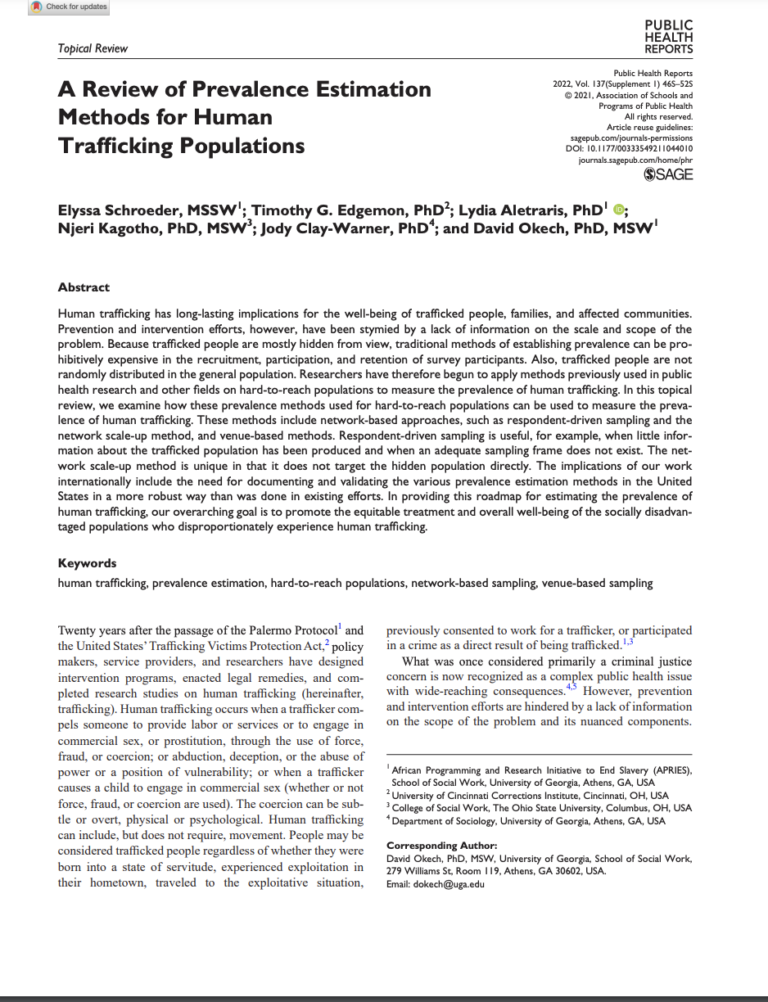Human trafficking has long-lasting implications for the well-being of trafficked people, families, and affected communities.
Prevention and intervention efforts, however, have been stymied by a lack of information on the scale and scope of the
problem. Because trafficked people are mostly hidden from view, traditional methods of establishing prevalence can be prohibitively expensive in the recruitment, participation, and retention of survey participants. Also, trafficked people are not
randomly distributed in the general population. Researchers have therefore begun to apply methods previously used in public
health research and other fields on hard-to-reach populations to measure the prevalence of human trafficking. In this topical
review, we examine how these prevalence methods used for hard-to-reach populations can be used to measure the prevalence of human trafficking. These methods include network-based approaches, such as respondent-driven sampling and the
network scale-up method, and venue-based methods. Respondent-driven sampling is useful, for example, when little information about the trafficked population has been produced and when an adequate sampling frame does not exist. The network scale-up method is unique in that it does not target the hidden population directly. The implications of our work
internationally include the need for documenting and validating the various prevalence estimation methods in the United
States in a more robust way than was done in existing efforts. In providing this roadmap for estimating the prevalence of
human trafficking, our overarching goal is to promote the equitable treatment and overall well-being of the socially disadvantaged populations who disproportionately experience human trafficking.

